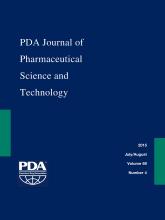Abstract
Snake bites represent a serious public health problem, particularly in rural areas worldwide. Antitoxic sera preparations are antibodies from immunized animals and are considered to be the only treatment option. The purification of antivenom antibodies should aim at obtaining products of consistent quality, safety, efficacy, and adherence to good manufacturing practice principles. Endotoxins are an integral component of the outer cell surface of Gram-negative bacteria. They are common contaminates of the raw materials and processing equipment used in the manufacturing of antivenoms. In this work, and as a part of quality control testing, we establish and examine an environmental monitoring program for identification of potential sources of endotoxin-producing Gram-negative bacteria throughout the whole steps of antivenom preparation. In addition, we follow all the steps of preparation starting from crude plasma till finished product using a validated sterility and endotoxin testing.
Samples from air, surface, and personnel were collected and examined through various stages of manufacturing for the potential presence of Gram-negative bacteria. A validated sterility and endotoxin test was carried out in parallel at the different production steps. The results showed that air contributed to the majority of bacterial isolates detected (48.43%), followed by surfaces (37.5%) and then personnel (14%). The most common bacterial isolates detected were Achromobacter xylosoxidans, Ochrobactrum anthropi, and Pseudomonas aeruginosa, which together with Burkholderia cepacia were both also detected in cleaning water and certain equipment parts. A heavy bacterial growth with no fungal contamination was observed in all stages of antivenom manufacturing excluding the formulation stage. All samples were positive for endotoxin including the finished product.
Implementation and continued evaluation of quality assurance and quality improvement programs in aseptic preparation is essential in ensuring the safety and quality of these products.
LAY ABSTRACT: Antitoxic sera preparations are the only treatment option for snake bites worldwide. They are prepared by immunizing animals, usually horses, with snake venom and collecting horse plasma, which is then subjected to several purification steps in order to finally prepare the purified immunoglobulins. Components of the bacterial cell wall known as endotoxins can constitute a potential hazardous contamination known as pyrogen in antisera, which can lead to fever and many other adverse reactions to the person subjected to it.
In this work, we monitored the environment associated with the different steps of production and purification of snake antivenom prepared from immunized horses. We examined the air quality, surface, and personnel for possible sources of contamination, particularly the presence of Gram-negative bacteria, which is the major source of endotoxin presence. We also monitored all stages of preparation by sterility and endotoxin testing. Our results showed that air contributed to the majority of bacterial isolates. Sterility testing revealed the presence of bacterial contamination in all the intermediate steps, as only the final preparation after filtration was sterile. Endotoxin was present in all tested samples and the final product. Good manufacturing practice procedures are essential in any facility involved in antisera production.
- © PDA, Inc. 2015
PDA members receive access to all articles published in the current year and previous volume year. Institutional subscribers received access to all content. Log in below to receive access to this article if you are either of these.
If you are neither or you are a PDA member trying to access an article outside of your membership license, then you must purchase access to this article (below). If you do not have a username or password for JPST, you will be required to create an account prior to purchasing.
Full issue PDFs are for PDA members only.
Note to pda.org users
The PDA and PDA bookstore websites (www.pda.org and www.pda.org/bookstore) are separate websites from the PDA JPST website. When you first join PDA, your initial UserID and Password are sent to HighWirePress to create your PDA JPST account. Subsequent UserrID and Password changes required at the PDA websites will not pass on to PDA JPST and vice versa. If you forget your PDA JPST UserID and/or Password, you can request help to retrieve UserID and reset Password below.






